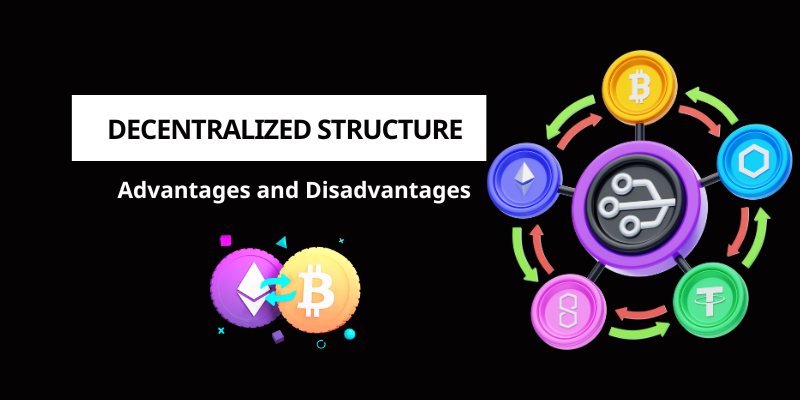Decentralized structure Advantages and Disadvantages
In today’s rapidly evolving world, the concept of a decentralized structure has gained significant attention across industries, from businesses and governments to blockchain technology and social systems. But what exactly does it mean, and what are the pros and cons of adopting such a model? In this article, we’ll explore the Decentralized structure Advantages and Disadvantages to help you understand its implications and whether it’s the right fit for your needs.
Contents
What Is a Decentralized Structure?
A decentralized structure refers to a system where decision-making power and responsibilities are distributed across multiple levels, units, or entities rather than being concentrated in a single central authority. This approach contrasts with centralized systems, offering a unique way to manage operations, resources, and innovation. To fully grasp its impact, let’s break down the Decentralized structure Advantages and Disadvantages.
Decentralized structure Advantages and Disadvantages
Advantages of a Decentralized Structure
The benefits of decentralization are numerous, making it an appealing choice for many organizations and networks. Here are the key Decentralized structure Advantages:
1. Enhanced Flexibility and Responsiveness
One of the standout Decentralized structure Advantages is its ability to adapt quickly. Without the need to wait for approval from a central authority, local units or individuals can respond to changes or challenges in real-time. This is particularly valuable in fast-paced industries or unpredictable environments.
2. Empowerment and Autonomy
Decentralization empowers people at various levels by giving them control over their decisions. This autonomy often leads to higher motivation, creativity, and ownership—key drivers of success in any system.
3. Greater Resilience
A decentralized structure has no single point of failure, making it more robust. For example, in blockchain networks, if one node goes down, the system continues to operate seamlessly. This resilience is a critical Decentralized structure Advantage in ensuring continuity.
4. Utilization of Local Expertise
By distributing authority, decisions can be made by those closest to the action, leveraging local knowledge and expertise. This tailored approach often results in more effective solutions.
5. Reduced Central Overload
Spreading responsibilities prevents a central authority from becoming overwhelmed, eliminating bottlenecks and improving overall efficiency—a practical Decentralized structure Advantage for large-scale operations.\

Disadvantages of a Decentralized Structure
While the benefits are compelling, there are also notable drawbacks to consider. Let’s examine the Decentralized structure Disadvantages:
1. Coordination Difficulties
A major Decentralized structure Disadvantage is the challenge of aligning efforts. Without centralized oversight, different units may pursue conflicting goals, leading to inefficiencies or miscommunication.
2. Risk of Inconsistency
When authority is spread out, standards and policies can vary between units. This lack of uniformity can confuse stakeholders or dilute the system’s overall effectiveness.
3. Increased Operational Costs
Decentralization often requires duplicating resources—like personnel, technology, or infrastructure—across multiple locations or nodes. This can make it a costly option, marking a significant Decentralized structure Disadvantage.
4. Potential for Fragmentation
Too much independence can weaken unity, creating silos or even internal competition. This fragmentation is a risk that organizations must manage carefully.
5. Accountability Challenges
Pinpointing responsibility in a decentralized system can be tricky. When things go wrong, the distributed nature of authority might obscure who’s accountable—a notable Decentralized structure Disadvantage.
Balancing the Decentralized Structure Advantages and Disadvantages
The Decentralized structure Advantages and Disadvantages highlight a trade-off between flexibility and control. For instance, a tech startup might thrive with decentralization to foster innovation, while a government agency might struggle without centralized coordination. The success of this model depends on the context—its goals, scale, and ability to manage the inherent challenges.
Understanding the Decentralized structure Advantages and Disadvantages is crucial for anyone considering this approach. On one hand, it offers resilience, empowerment, and adaptability; on the other, it poses risks of inconsistency, higher costs, and coordination issues. By weighing these factors, you can determine if a decentralized structure aligns with your objectives.
Are you exploring decentralization for a specific project or system? Let us know your thoughts, and we’ll dive deeper into how the Decentralized structure Advantages and Disadvantages apply to your situation!